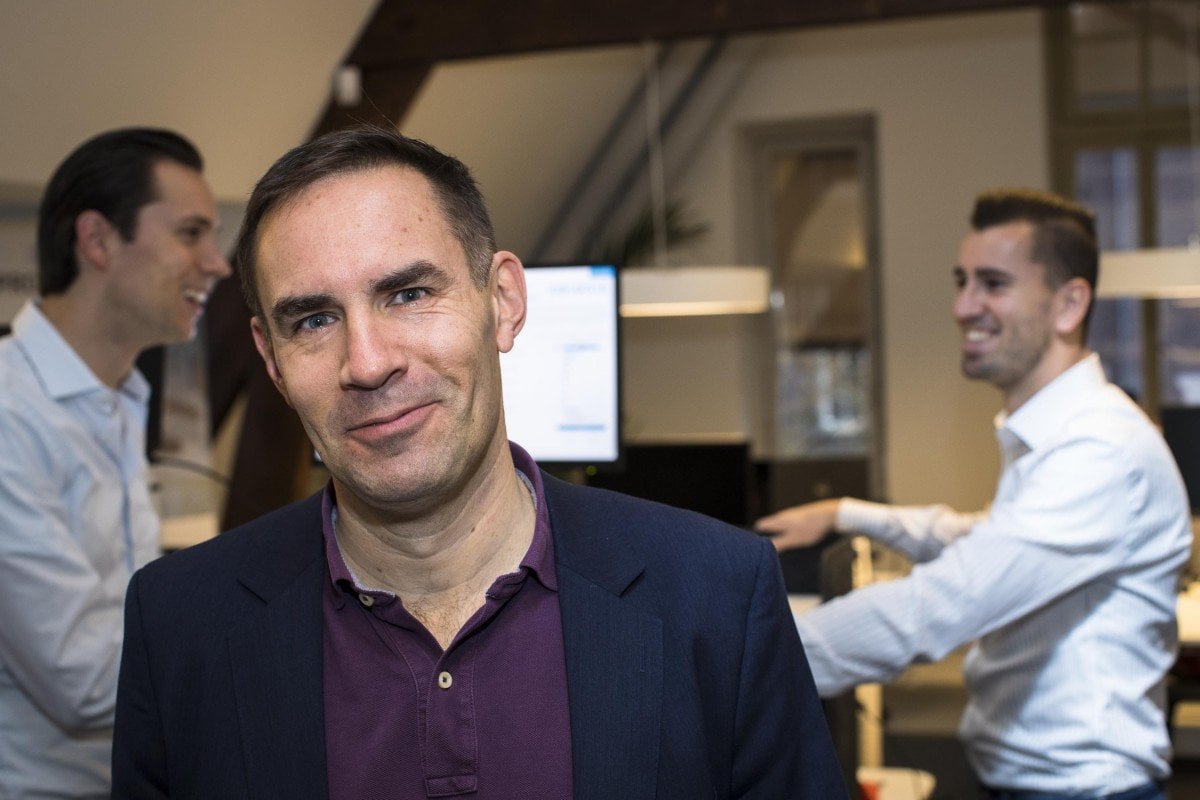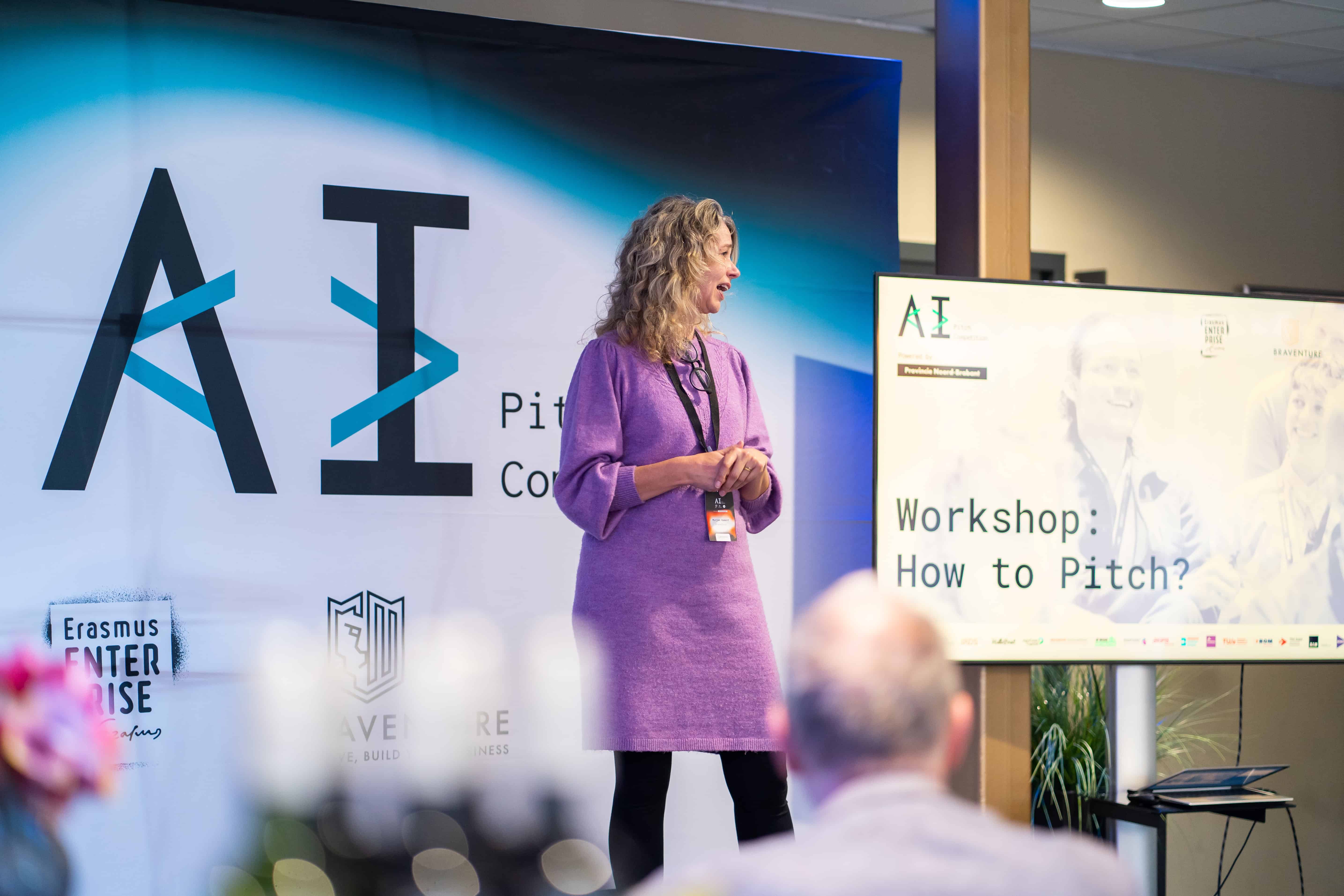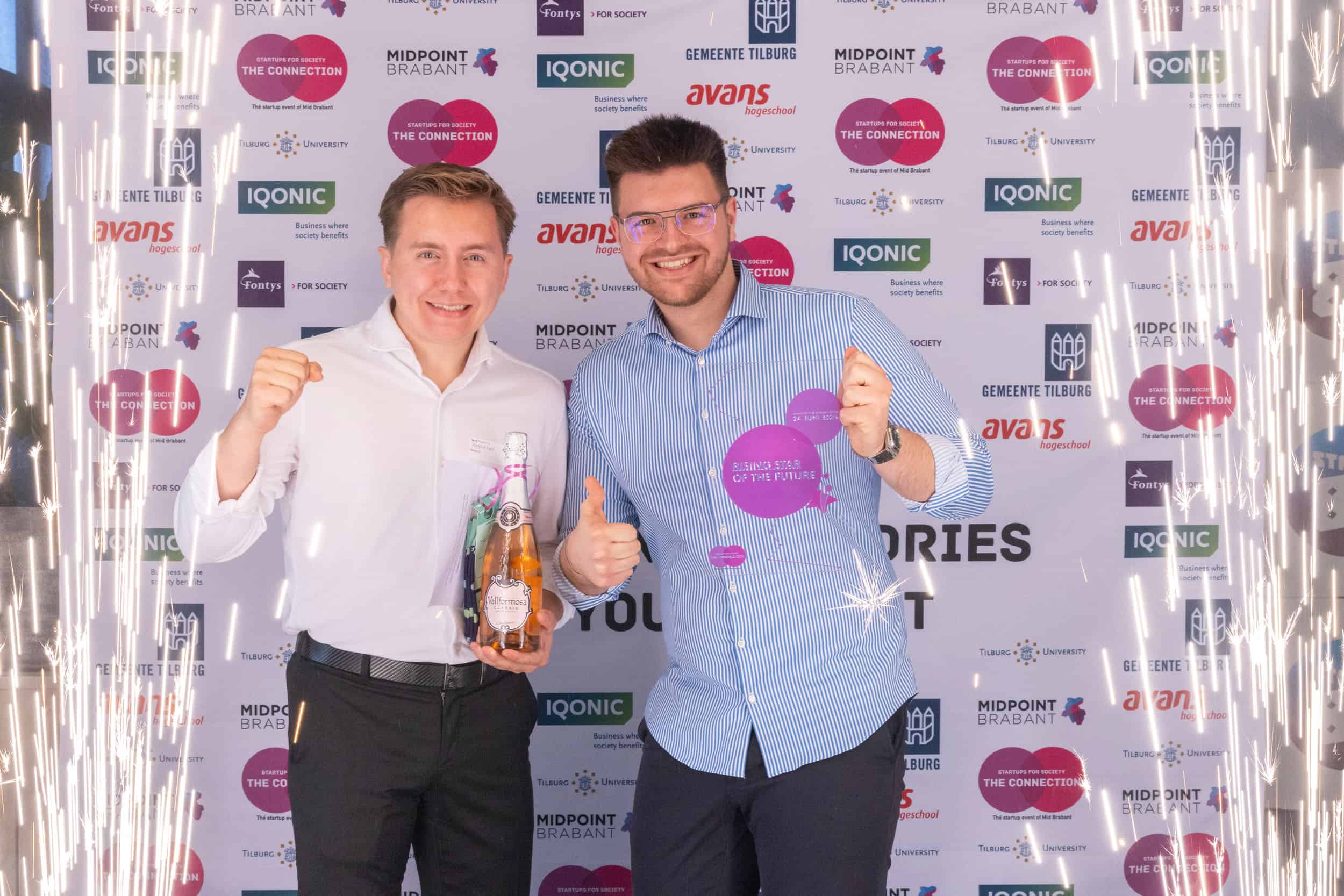
They have a kind of ultrasound device that searches through all your automated processes to uncover hidden costs, bottlenecks and other inefficiencies. And whenever they unleash their process mining software solution, companies have difficulty believing the result. About failed blueprints, the power of predictive values, and the role of their godfather from Eindhoven. At the table with the data scientists from Celonis in ‘s-Hertogenbosch, a company with hundreds of customers from dozens of countries, an estimated value of about a billion euros and its headquarters in Munich.
He hears it over and over again. All the companies he visits say the same according to Alexander Lethen, regional vice president Benelux of Celonis: ‘Your story is too good to be true. We’ve heard it all before. People have been making these claims for decades, but nobody has ever delivered on their promises. What you say you can do is impossible’. Lethen with a smile: “Perhaps it is too good to be true, but we really do deliver what we promise. With our software, you can analyse and visualize all your IT-controlled business processes. It uncovers bottlenecks, hidden costs and other inefficiencies. And then optimises them where necessary afterwards.”
Wil van der Aalst
That ‘too good to be true’ is a knee-jerk reaction to the powerful capabilities of Celonis’ special process mining software, says Lethen. Its development is preceded by a long story that starts in Eindhoven. At the TU/e, under the auspices of professor Wil van der Aalst to be precise. And he is not just any old professor – in fact, he is regarded internationally as the leading academic in the field of data science and is also one of the most widely cited data scientists in the world. He recently changed TU Eindhoven for RWTH Aachen. Lethen: “Companies use all kinds of automated processes. Ranging from customer service and production to recruitment and making payments. Taken together, they generate so much data that companies have difficulty seeing the wood for the trees. They lose sight of the big picture, meaning that large volumes of valuable information are lost without being used. As a result, many processes no longer run optimally and sometimes simply go haywire. Process mining makes all these processes transparent so that you can set them up more efficiently.”
God of rivalry and envy
Van der Aalst is one of the founders of process mining; he invented the underlying technology ten years ago. Three German PhD students from the Technical University of Munich stumbled across his findings. Research into process mining was still highly academic at the time. No applied software existed. So the three students decided to write their own software program, based on Van der Aalst’s research. They carefully selected a number of potential customers where they could test their idea. The results were so surprising that they decided to launch their process mining software product on the market in 2011. Under the name of Celonis. That name is derived from Zelus (or Zelos), the Greek god of rivalry and envy. Lethen: “You actually write his name with a Z, but you don’t want to choose a name starting with Z for your company. If you do, you end up in the last section of the Yellow Pages. So a name that starts with an A, B or C is a better choice. Which explains Celonis.”
Data Mining versus Process Mining

Perhaps clarifying the difference between data mining and process mining would be helpful. “Data mining is more superficial”, says Ron Pelsmaeker, responsible for Marketing & Inside Sales at Celonis. “It looks at items of static data that are stored in databases when the analysis takes place. Process mining delves much deeper down into that data pool. Establishes relationships and looks at how the data originated.” You can compare process mining with an ultrasound image of a company, he says. Not a snapshot, not a sample, but a film fragment while the company is ‘in operation’. Only then can you analyse a process holistically. “You can see exactly how processes run and where and how they might fail in real time.” After taking the ultrasound, you look beyond the location of the problem. “Which is what a good doctor would do”, he comments. After all, a doctor takes a patient’s entire body and lifestyle into account when considering a physical complaint. “The same applies to a business process: it doesn’t run in isolation. Let’s take a production process as an example. A process like this is generally fully automated. But something can still go wrong on the production line, in a paint section. The robots may not be properly adjusted. Or a supplier may have ordered a paint that does not have adequate covering power. Or the employees may not be adequately trained. They think they know how the machine operates, but repeatedly make the same mistakes.”
There’s no such thing as A to Z
Pelsmaeker knows what he is talking about. Every company has a blueprint, coded from start to finish, for most processes. But, in reality, things are often different. Because not everyone follows the agreed procedure from A to Z. Human nature, says Pelsmaeker. This is typical of how people think: you know what, this time we’ll do it a little differently. The standard delivery time is fifteen days, but this is an order from a regular customer who also knows you quite well personally and who really needs a fast turnaround. So you deviate from the blueprint. Are you thinking that this is an exception? Well, you would be wrong: the opposite is true. Lethen: “In many cases, the prescribed procedure, the blueprint, is deviated from within a company. In financial processes, production processes or even job application processes.”
Purchase process
Lethen displays a typical purchase process in a large B2B company. More than 1 million orders, worth more than 2 million at cost price. The purchase process starts when somebody in that company buys something and stops when payment is made. A clear and simple linear process. You submit an order request and receive an order form. You complete the order form. Your order is placed and sent. The invoice is received, entered in the ledger, paid and that’s that. Simple, right? Anything but, because by no means everybody in the company adhered to this procedure, says Lethen. “In the company in question, there were actually hundreds of different variants of that apparently so simple procedure from order to payment.” The order request was missing; someone received an invoice first; the price or delivery time was changed; employees bypassed the purchasing department because they thought that they worked too slowly and bureaucratically. Lethen: “The standard procedure was used in less than half of the cases. When you draw all those variations into that supposedly linear diagram, you get a spaghetti-like web of lines and connections.
Panic attack
A CMO, CFO or CEO often suffers a spontaneous panic attack when he sees that plate of spaghetti. ‘This is impossible, this is not how we operate. We can’t be that disorganised. All the procedures in our business are attuned to each other for maximum agility.’ That may be so, but the data does not lie. Lethen: “People generally analyse a small part of the process. So you only see a few steps. The big picture is generally lacking.” The ‘Spaghetti di Celonis’ clearly presents that big picture and it comes as a shock. Not only does it show where the supposedly straight line meanders and deflects off to the side, it also shows you where you can straighten it out again. “There is a vast gap between theory and practice. And nobody in the company knows about it. That’s just crazy.”
Formula 1 circuit
This is why you choose process mining, says Pelsmaeker. “You want to identify where the bottlenecks in your business process lie and which processes are unnecessarily costly or time-consuming.” That does not necessarily mean that you will be able to resolve all the pitfalls and bottlenecks immediately, he says. In some cases, you may say: ‘Well, you know, we’ve been doing things that way for years and that’s okay. Any changes we make may lead to internal bickering and resistance, and that will not be good for our company culture. So let’s leave it unchanged.’
‘s-Hertogenbosch

Celonis has chosen ‘s-Hertogenbosch as the base for its sales and marketing drive in the Benelux. This has everything to do with the presence of the Jheronimus Academy of Data Science (JADS) there. The Academy is a joint venture between Tilburg University and TU/e. Students have been able to enrol for a Data Science & Entrepreneurship course at this data academy since 2016. The course combines subjects offered by both universities. Mathematics and engineering alongside social, ethical and legal issues. The main question was: where should the course be offered? One university city is not the other, and forcing this choice on students would cause a political row. That was when ‘s-Hertogenbosch came into the picture. There is no university there, and the city is easy to reach from both Tilburg and Eindhoven. And an ideal location was also available: the former Mariënburg Monastery on the St Janssingel. Just a hop, skip and jump away from the railway station. Celonis also has its office here, in the attic at the top of the JADS building.
Data science biotope
At JADS, more than a dozen data-driven companies and hundreds of international students are brought together under one roof. They attend lectures here for two years and, if they want to, they can start work immediately for the businesses in the same building after obtaining their degrees. Pelsmaeker: “Good data scientists are hard to find. As soon as they start their first year at the Academy, they hear our name and know that we are in the building somewhere.” And the students also come knocking on the door at Celonis. Which is the idea. The software company is the global market leader in the field of enterprise-ready Process Mining and is growing blindingly fast. It now has several branches and offices in Europe (Munich, London and ‘s-Hertogenbosch) and the USA (New York and other cities). At present, Celonis employs more than 400 people worldwide, mostly young, highly educated data scientists. The company has doubled in size in less than a year. The branch in ‘s- Hertogenbosch is also pretty much bursting at the seams. But nobody is contemplating moving elsewhere, no way. Because they are delighted with their warm and comfortable data science biotope at JADS.
Predictive analytics

Celonis has a permanent need for new people. The product continues to evolve. This applies to every technology: you have to optimise software continuously. Celonis collaborates closely with its virtual godfather, Van der Aalst, and TU/e. In order to develop an even better understanding of business processes and generate even more accurate diagnoses. Lethen: “We explicitly look at predictive values rather than focusing on retrospective analysis. This means that you can tackle possible process problems before they arise. And perhaps even predict when you are likely to lose customers so that you can think of strategies for retaining them.”
Chief Process Owner
Celonis is an investor’s dream. The software company is worth 1 billion dollars on paper. Lethen and Pelsmaeker shrug their shoulders when they hear this number. They prefer to talk about their customers. Hundreds of companies from 25 countries. A customer base that includes both huge Fortune 500 corporations and medium-sized companies. “Process mining is particularly interesting for companies that handle a large volume of transactions. In many cases, these are organizations with a turnover of several million.” Pelsmaeker and Lethen think that they will soon start using process mining as part of their normal business operations. With a Chief Process Owner who can see whether processes are running as they should from behind his desk. Lethen: “Our software is a powerful analysis tool that puts all your automated processes under the microscope to see where the root cause of a problem lies. Asking expert questions requires data experts. But the output can be understood by a wide audience.” Thousands of people already work with the tool at Siemens, not just data scientists. This low-threshold approach will ensure that process mining becomes even more popular. And there is another compelling benefit, says Pelsmaeker: “When people disagree, the underlying facts are just a few mouse-clicks away. ‘Look, these are the orders, and this is what actually happened’. Objectivity rather than subjectivity. This prevents internal bickering and political manoeuvring.”
Source: © Brabant Brand Box








